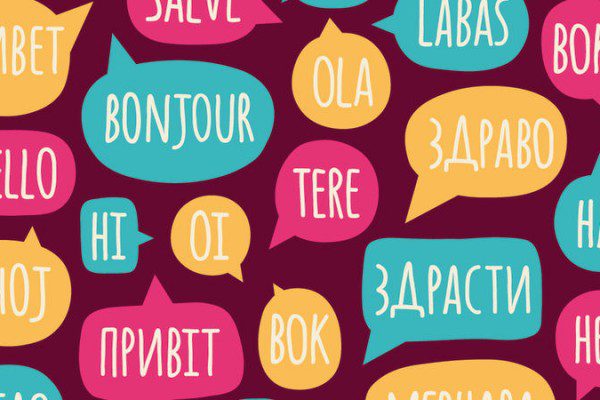
What is a ‘dead language’?
A ‘dead language’ is any language that is no longer being actively spoken by a living community as a means of common (daily?) discourse. Put another way, languages that no longer have any living native speakers (people who were raised speaking the language as a means of general communication) are considered ‘dead’.
Are people still learning dead languages?
Absolutely! People are still learning Latin, Ancient Greek, Coptic Egyptian, Sanskrit, and elements of Gothic and Old Norse, among others. Latin, Ancient Greek, Sanskrit, and Coptic Egyptian are all active languages of religion and philosophy. Sanskrit is particularly useful for learning Eastern languages like Hindi, Urdu, and Punjabi. This is much like the way Latin is widely helpful for learning Western languages, especially the Romance languages. Gothic and Old Norse can similarly be helpful for unlocking the deeper valences of Germanic languages like Icelandic, Norwegian, and even Swedish.
Why: Easier Language-Learning
Learning a dead language can help you gain a deeper understanding of your own language, of other languages, and of certain types of terminology. It can also make learning other, still-active languages easier! This is because they introduce you to the wider patterns found within language groups and make the logic behind loan words clearer. A great deal of our present scientific and medical terminology comes from Latin and Greek, as does a rather large percentage of the words we use every day in English.
Why: Cultural History
Learning dead languages can also help deepen our understanding of our own history and development. Languages are liquid mirrors for the cultures they represent. You can learn a lot about a given society and both its history and perspectives by closely observing its language. How languages are formed and develop, what words they borrow from other languages, (and at what time), and how to incorporate those words are all reflect the historical conditions under which a language is developing— whether that means distant history, more recent history, or current conditions.
For example, a linguistic anthropologist from another planet might note how many of our world’s languages have shifted over the last couple of decades. Some languages that are geographically closer together have begun to bleed into one another more than in the past. More interestingly, languages positioned nowhere near each other on the map have begun borrowing from one another as well. For some, a dramatic increase in the range of speakers has been a gift. Sometimes the things being borrowed are practical, like words for objects, activities, and ideas. Sometimes they’re colloquial and creative. But regardless of their nature, they’re very wide-spread. More widespread than they have likely ever been at any other time in human history.
Why: Globalization
Armed only with this extensive linguistic data, our alien anthropologist would likely be able to conclude that our world has seen a meaningful shift in cultural interactions. Societies that have been relatively cut off from one another are now interacting more frequently. The nature of that interaction has shifted, a wider range of material objects and ideas are being shared, and new channels of rapid communication have opened. All of these conclusions would be true! This is due to the rise of the internet, improved communication technologies, social media, and globalization.
Our linguistic patterns have diligently recorded all of this. Consider that as English speakers, we’ve had to absorb foreign words for imported foods, clothing, décor, activities, and even concepts. Ethnic restaurants are everywhere and usually maintain the native names for their dishes. It’s not uncommon for activities developed in other countries and then shared internationally to keep some, if not all, of their native-language terminology (like yoga). Meanwhile, youth all over the world are slinging all sorts of English slang and colloquialisms, even when speaking their native languages. The English words for common devices and services like ‘computer,’ ‘laptop,’ ‘internet,’ ‘Wi-fi,’ or ‘to google’ are often adopted wholesale or only partially changed.
This same method works for us human beings and our own history. We have become that alien anthropologist as we get more removed from most of our own past. We look back at our own records and hardly know how to interpret them sometimes. But watching for the patterns mentioned above can help us better understand what happened, and how it influenced our heritage. Formal records of historical events can be, and often are, embellished in favor of a powerful winner. However, linguistic and cultural evidence is harder to erase.
Why: Benefit Your Brain
Then there are also cognitive benefits. We’ve all heard about how learning a language stretches your mind and is healthy for your brain. Those benefits are the same, regardless of whether the language you’re learning is contemporary and active, or not! If that’s not enough, consider another angle. What if you could read our most prized ancient stories and philosophical texts in their original languages? The translation of any text is tricky. No matter how good your translators are, something is always going to get lost. That drift in interpretation grows larger when the text is very old. Reading texts as they were intended to be read solves a big part of that problem. It also enriches our interaction with these treasures. Reach out and touch history! You could be part of an effort to revitalize and preserve a piece of our collective heritage.
How?
There are lots of options for learning dead languages. Latin courses are relatively easy to find at various institutions, and some universities/colleges offer courses in the others as well. It just requires a little bit of searching. There are also a variety of print coursebooks to work with if you prefer to learn on your own. Also, there is a growing variety of atypical translations of beloved modern stories available. Take this Ancient Greek translation of Harry Potter and the Philosopher’s (Sorcerer’s) Stone, for example. Or this hieroglyphic transcription of Beatrix Potter’s Peter Rabbit. Try them out!
By Carrie Carlson
For more DLS, check out other blogs and visit us on Facebook, LinkedIn, Instagram, or Twitter!




